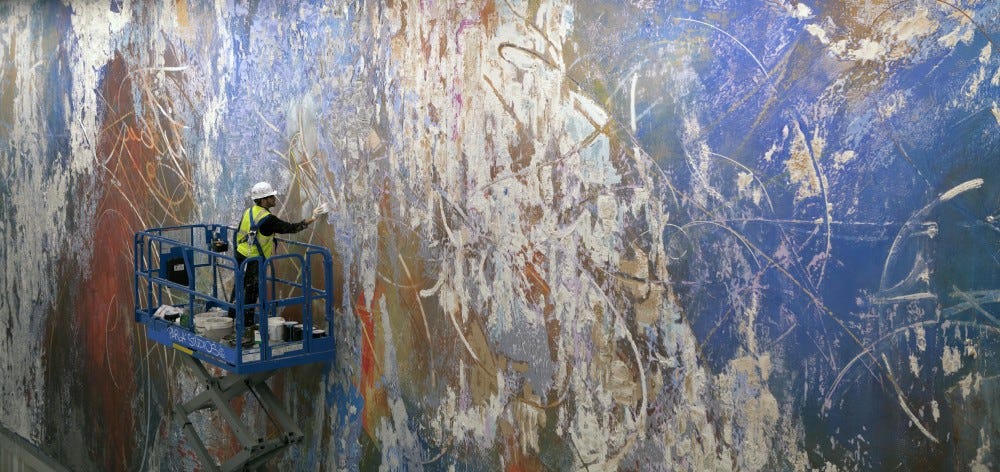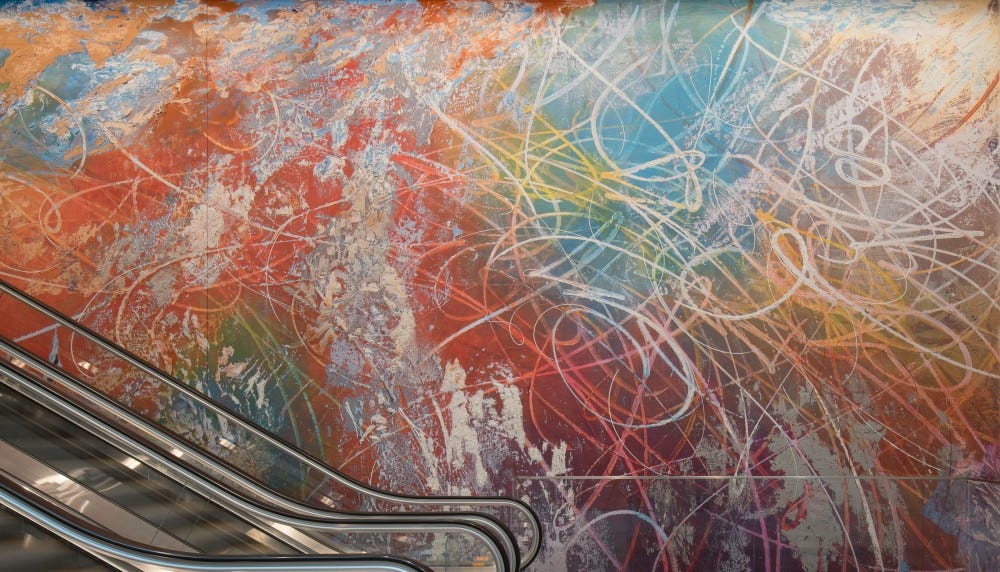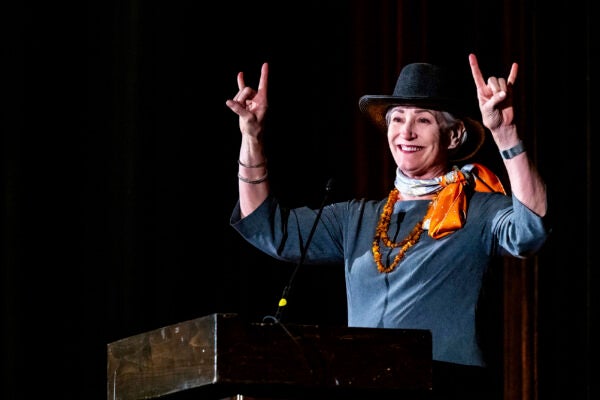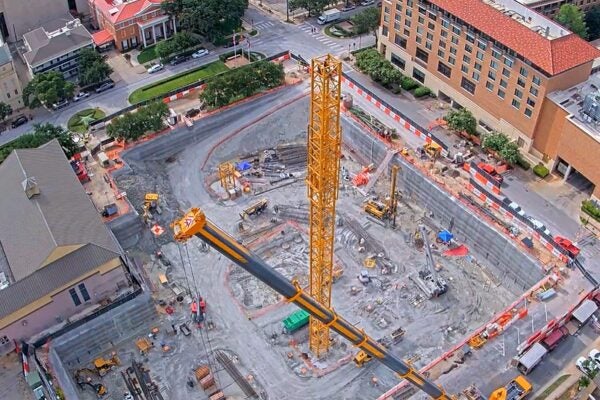Inspiring Thought
UT’s Landmarks Program on José Parlá’s Rowling Hall Mural
By Jeremy M. Simon

Powerful art encourages viewers to think, and visitors to the McCombs School of Business’ recently opened Rowling Hall can expect to think deeply as they experience “Amistad América.” The 4,000-square-foot mural by Brooklyn-based multimedia artist José Parlá welcomes entrants to the Zlotnik Family Ballroom, located in the underground level of the new graduate school of business.
Andrée Bober, director of the Landmarks Public Arts Program that commissioned the work for The University of Texas at Austin, explains why Parlá was chosen and how his art can expand a business education.
What role does Parlá’s art play in a business school?
It’s not an obvious choice for a business school. It doesn’t celebrate business, it’s not about business functions, and it has an aesthetic that’s pretty edgy and raw. I love the idea of bringing the unexpected into an environment that has a reputation for being rather conservative.
The mural can help accomplish something that university deans are concerned with: How do we not just impart information to students, but teach them to become creative thinkers? And how do we teach them to solve problems in a creative way? That’s what makes the best business people— creating opportunities for thought that promote future leaders and problem solvers.

What’s unique about his work?
This is the first painting and large-scale mural we’ve commissioned. Parlá is an artist whose type of work was not represented in our collections: He comes out of street art, but his painting has very much evolved from that point. He still maintains his roots in this experience, but has translated it into his own personal vocabulary using devices that are very distinctive to him, his hand, and his mark making. It has a kind of calligraphic flourish that’s very fresh and looks beautiful.
In addition, one of the things José does that is distinctive, especially for painters working today, is his ability to visualize and compose on a large scale. That’s different from many painters who work really well on a smaller scale, but when they expand to a much larger canvas the composition doesn’t cohere.
He took a risk to tackle this entire 4,000-square-foot area. But I trusted it would come out well because this is how he thinks as a painter. This is his natural language.
What else makes Parlá such a special artist?
A lot has to do with the aesthetics of his paintings, because of his signature style. But then there are other things that make him interesting, too: his understanding of history, his deep concern with human traces, and his impressions of places.
How do you select artwork for the Landmarks collection?
We approach the collection a little differently from most public art programs. We’re not merely interested in one piece and the story that it tells. We’re also interested in how it relates to the other works in the collection. Our goal is to create a cohesive body of work throughout the campus. Because the collection not only beautifies the campus, it also serves the pedagogical purpose of creating the best conditions for thought and growth.

Do you have any goals for the mural?
I think one of the big tenets in business education is learning how to be comfortable with ambiguity. Parlá’s art creates the possibility for the business school community to question. “Why is this here? Who painted it? What does this mean?” You have a sense of awe looking at it, but there’s a lot to unpack when you start to ask those kinds of questions.
We feel it’s our responsibility not just to present the work, but also to provide a range of resources. We hope people will watch the videos, read the essays, and visit the Landmarks website to learn more about the painting and the artist’s intention for it.
To view “Amistad América” in Rowling Hall: Use the AT&T Hotel and Conference Center’s main entrance on University Avenue. Go up one floor to level L, cross the courtyard into the Conference Center level M2 lobby, descend one level to M1 and follow the hallway into the Zlotnik Family Ballroom. Take the escalators or elevator down to the pre-function space of the ballroom. The mural can be viewed Monday to Friday from 7 a.m. to 8 p.m.
About this Post
Share:


